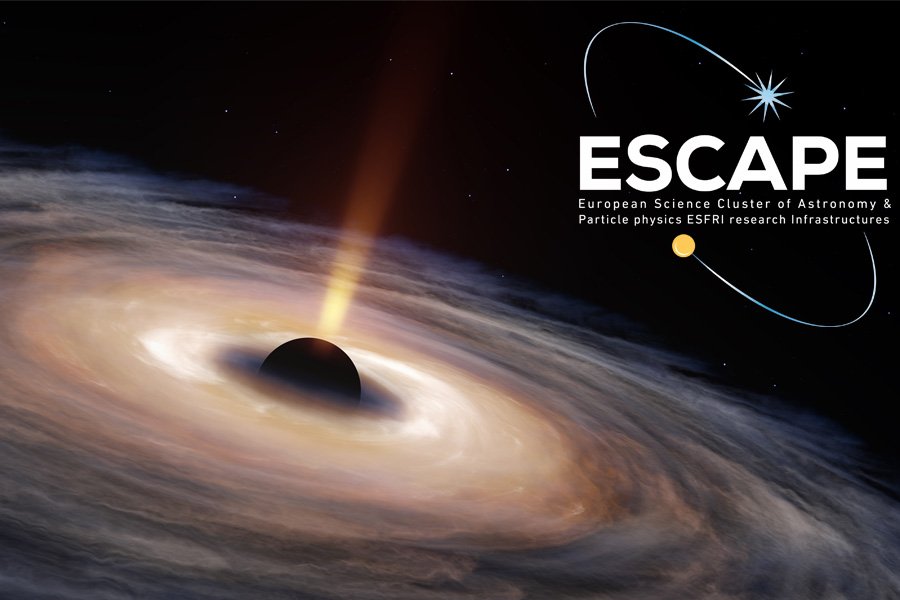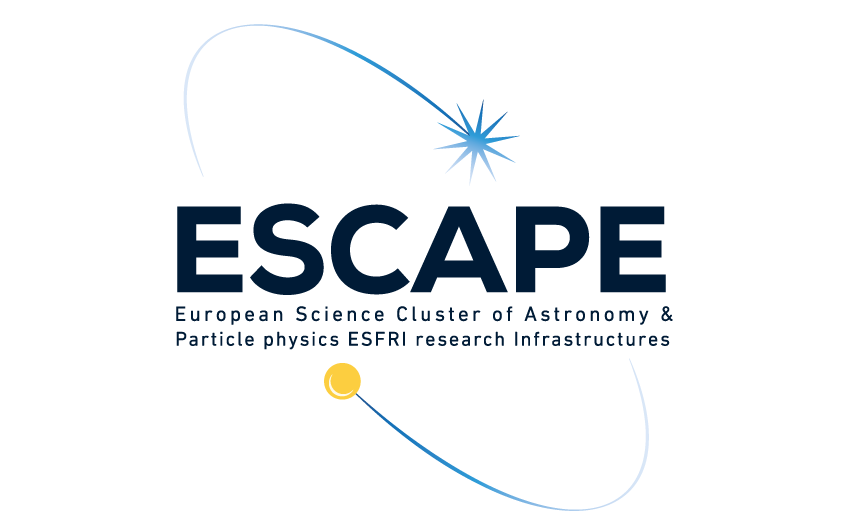

Open Science is the movement to make scientific data research available to society. As scientific research becomes highly data-driven, scientists are conscious of the growing need to share data, software and infrastructure to reduce wasteful duplication and increase economies of scale. Having this in mind, the European Commission is working towards an “European Open Science Cloud” (EOSC), which aims to build infrastructures to provide seamless access to FAIR data and interoperable services for the scientific community. To accelerate scientific discoveries and increase research data scientific value, researchers from different disciplines should also work together in a holistic approach.
In the last 3 years, ESCAPE has been making efforts towards making Open Science a reality by contributing to the EOSC, FAIR data adoption, and creating science projects with projects from different fields.
ESCAPE Cell integrated with the EOSC infrastructure
ESCAPE is accelerating scientific discoveries through the ESCAPE EOSC Cell, a cross-border and multidisciplinary environment, composed of ESCAPE five services, to enable EOSC to adopt services, e-infrastructures, and data stewardship of the European Strategy Forum on Research Infrastructures (ESFRI) projects.
ESCAPE aims to produce versatile solutions, with great potential for discovery, to support the implementation of EOSC thanks to open data management, cross-border and multi-disciplinary open environment.
An early prototype of this EOSC cell federated data infrastructure, with an overarching orchestration and identity management, can be seen in ESCAPE Data Infrastructure for Open Science (DIOS). Here, diverse scientific communities, namely with big data needs, have access to a place where data services co-exist with analysis tools that provide researchers data browsability and data access, software and code repositories. Linked directly to the EOSC infrastructure via OpenAIRE, the ESCAPE Open-Source Scientific Software and Service Repository (OSSR) collects software and services and, at the moment, is working towards its registration as a provider on the EOSC Portal (to be finalised by end of 2022).
The enablement of researchers to find, access, interoperate and reuse the data they need for their research, is possible thanks to ESCAPE Virtual Observatory (VO). Its disciplinary interoperability framework was defined by the International Virtual Observatory Alliance, being widely-used by data providers worldwide. ESCAPE is integrating VO data and services into EUDAT B2FIND as the way of connecting to EOSC (at the moment, over 24.000 registries are available in EUDAT B2FIND). Last but not least, the ESCAPE ESFRI Science Analysis Platform (ESAP) is implementing a platform for the analysis of open access data. It will facilitate re-use of existing ESFRI data collections and innovative analysis capabilities at large data rates and scales.
The ESCAPE EOSC Cell will be accessible from a single-entry point: the ESCAPE Virtual Research Environment (VRE) which will run within the EOSC Portal. The development of this VRE will start in the course of 2022.
FAIR principles implementation and repositories
To ensure research data is useful for others and becomes the norm in the digital age, the scientific community needs to provide FAIR data, that is, Findable, Accessible, Interoperable and Reusable.
One of ESCAPE’s main goals is to provide data according to FAIR principles through scientific data interoperability and new methodological approaches for quality certified data and tools sharing.
ESCAPE aims to increase researchers’ efficiency for the new generation of scientists that fully exploit ESFRI and EOSC facilities. Regarding Data findability, ESCAPE DIOS and its Data Management System RUCIO have a role on that matter. RUCIO connects the physical location of files at the sites (storage) with logical file names and associated metadata and/or file collections (datasets). Data accessibility is guaranteed via a common authentication and authorization method for users (ESCAPE IAM) and making use of standard protocols for data access that ensure common data interoperability on different services and platforms used by researchers. Along with EOSC Future, ESCAPE DIOS team is pursuing the idea of analysis reproducibility by integrating workflows in a well-defined framework for data reusability, making use of existing technologies (e.g. REANA) and repositories (e.g. ZENODO).
ESCAPE VO enables interoperability of data products and archive services which can be connected to the EOSC, while ESCAPE ESAP interface allows data access from across ESFRIs and other infrastructures, including access to standardized interoperable services. ESCAPE OSSR promotes the development of open scientific software and service under the FAIR paradigm, whose building blocks will become part of EOSC interoperability framework.
Cross-cluster collaboration activities and achievements
Researchers need to dare to stop hiding in their ivory towers and work together in a holistic approach, bringing together researchers from different projects and, especially, disciplines.
ESCAPE is joining forces with the other ESFRI projects towards the development of a consistent European research infrastructure ecosystem.
Along with the clusters projects ENVRI-FAIR, EOSC-Life, PANOSC and SSHOC, ESCAPE delivered the “ESFRI Science Clusters Position Statement on Expectations and Long-Term Commitment in Open Science” and “ESFRI Science Clusters Position Statement on Expectations and Long-Term Commitment in Open Science” with their expectations while pointing out a common structured vision and a series of suggestions for the future EOSC roadmap.
Together with EOSC Future, ESCAPE is developing Science Projects (SPs) on Dark Matter and Extreme Universe and Gravitational Waves to demonstrate multi-domain science integration across ESCAPE, new cutting-edge open science capabilities by making use of the services implemented within ESCAPE. The SPs are strengthening the opportunities delivered by EOSC in producing excellent cross-domain science and federating cross-cluster initiatives for innovation and education. This is also the result of a strong cross-cluster coordination and a multidisciplinary shared action.
READ THE ESCAPE BRIEF REPORT TO LEARN MORE ABOUT ESCAPE’S CONTRBUTION TO OPEN SCIENCE
Views
32,413

